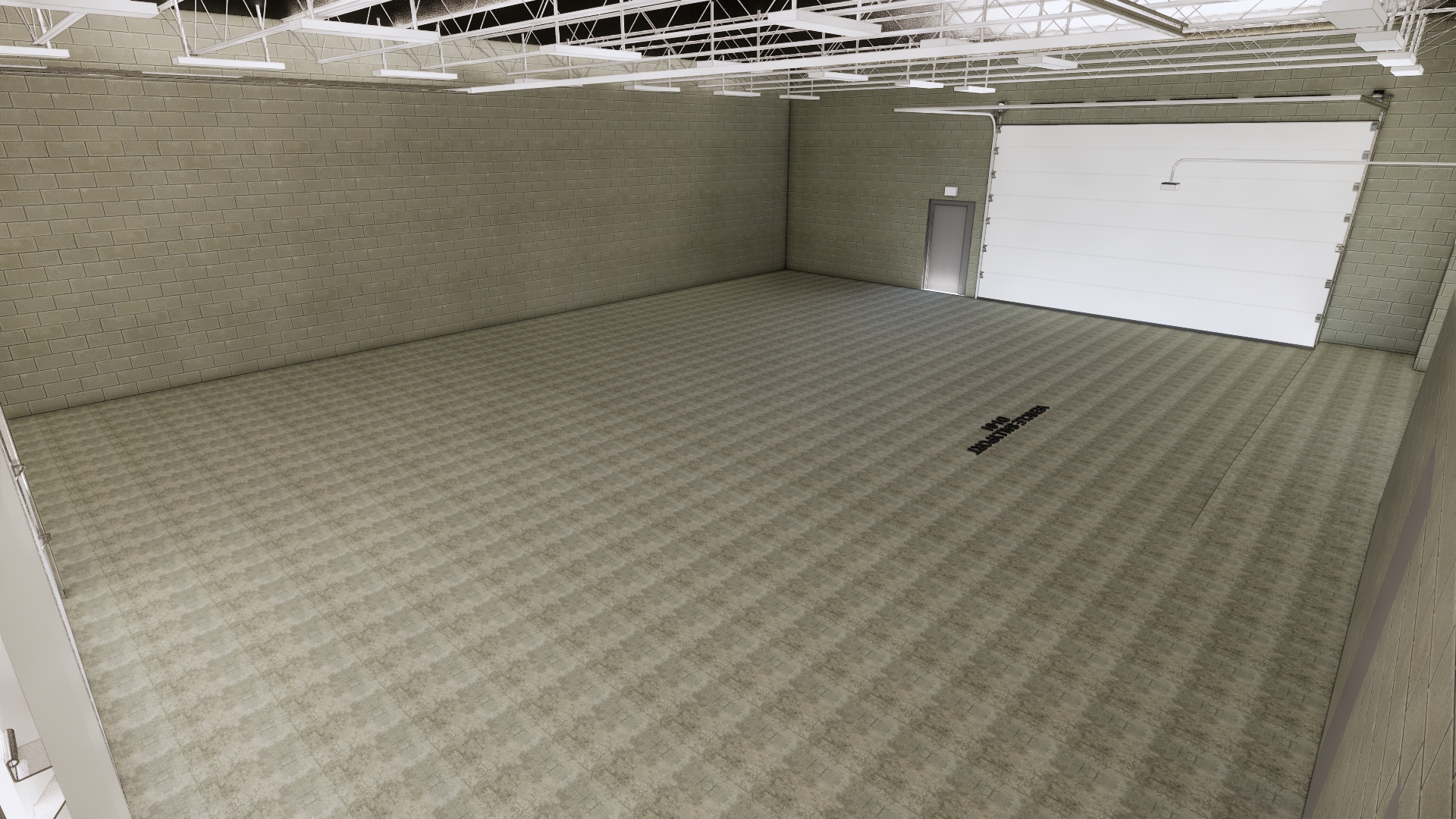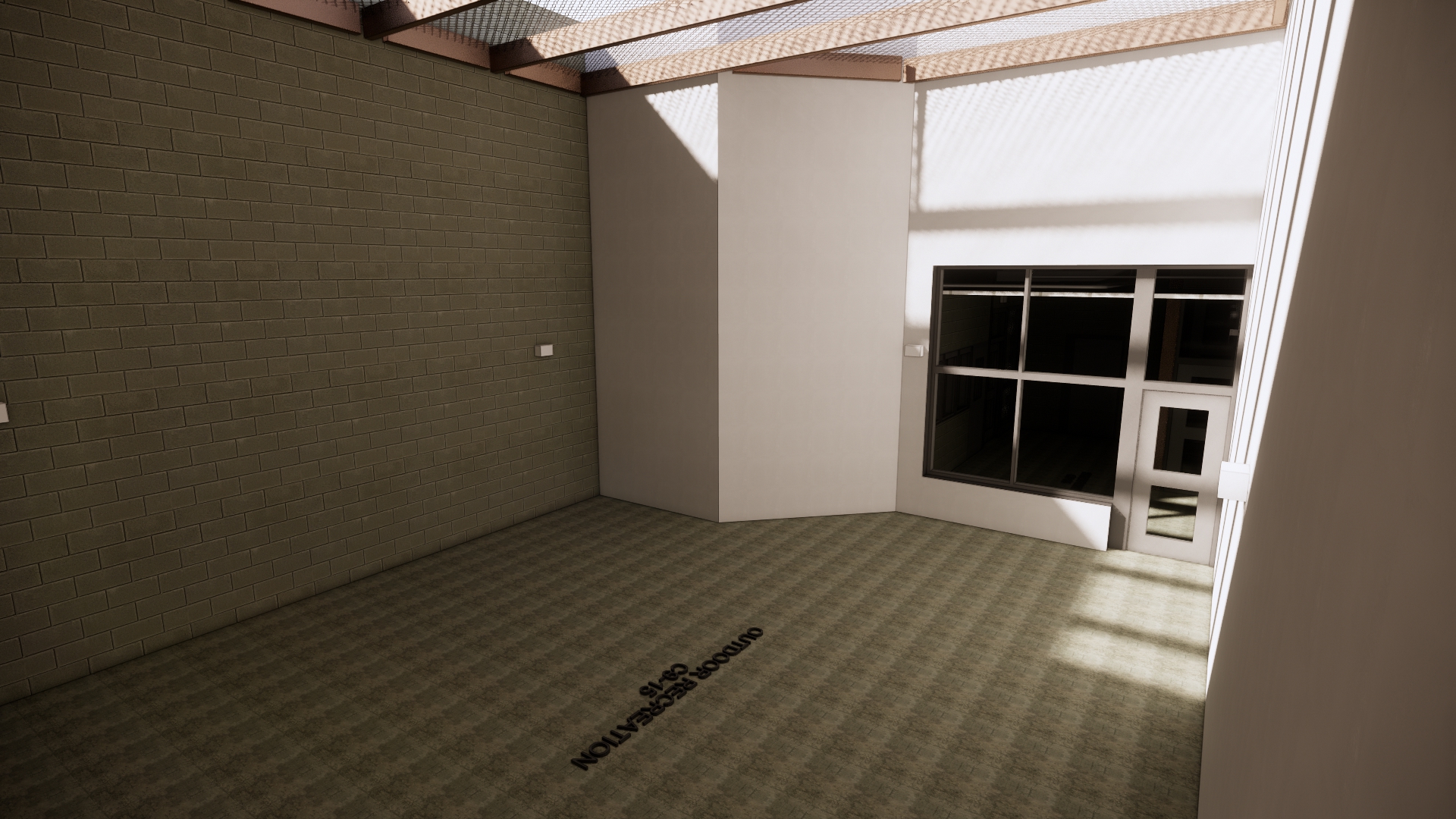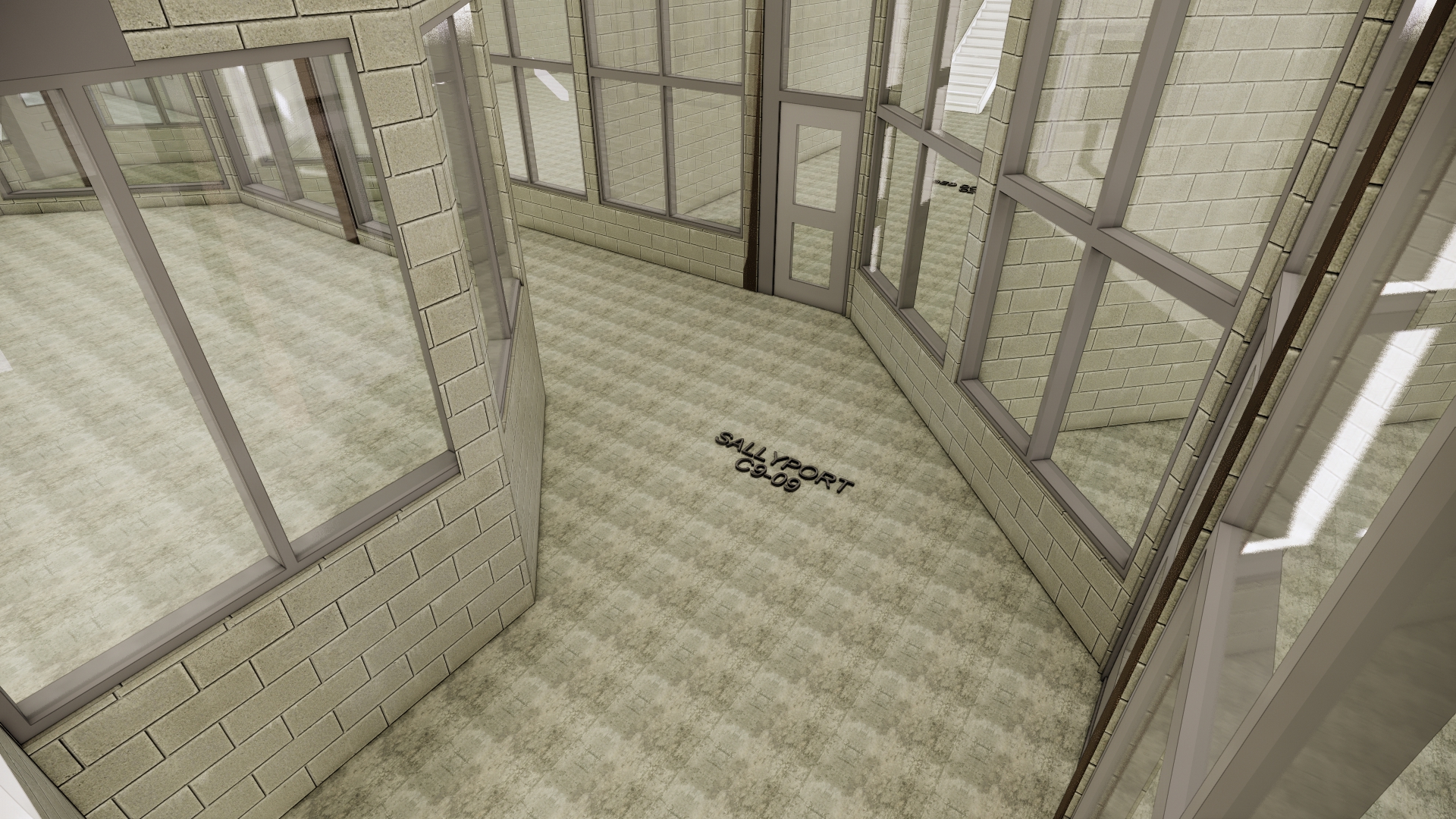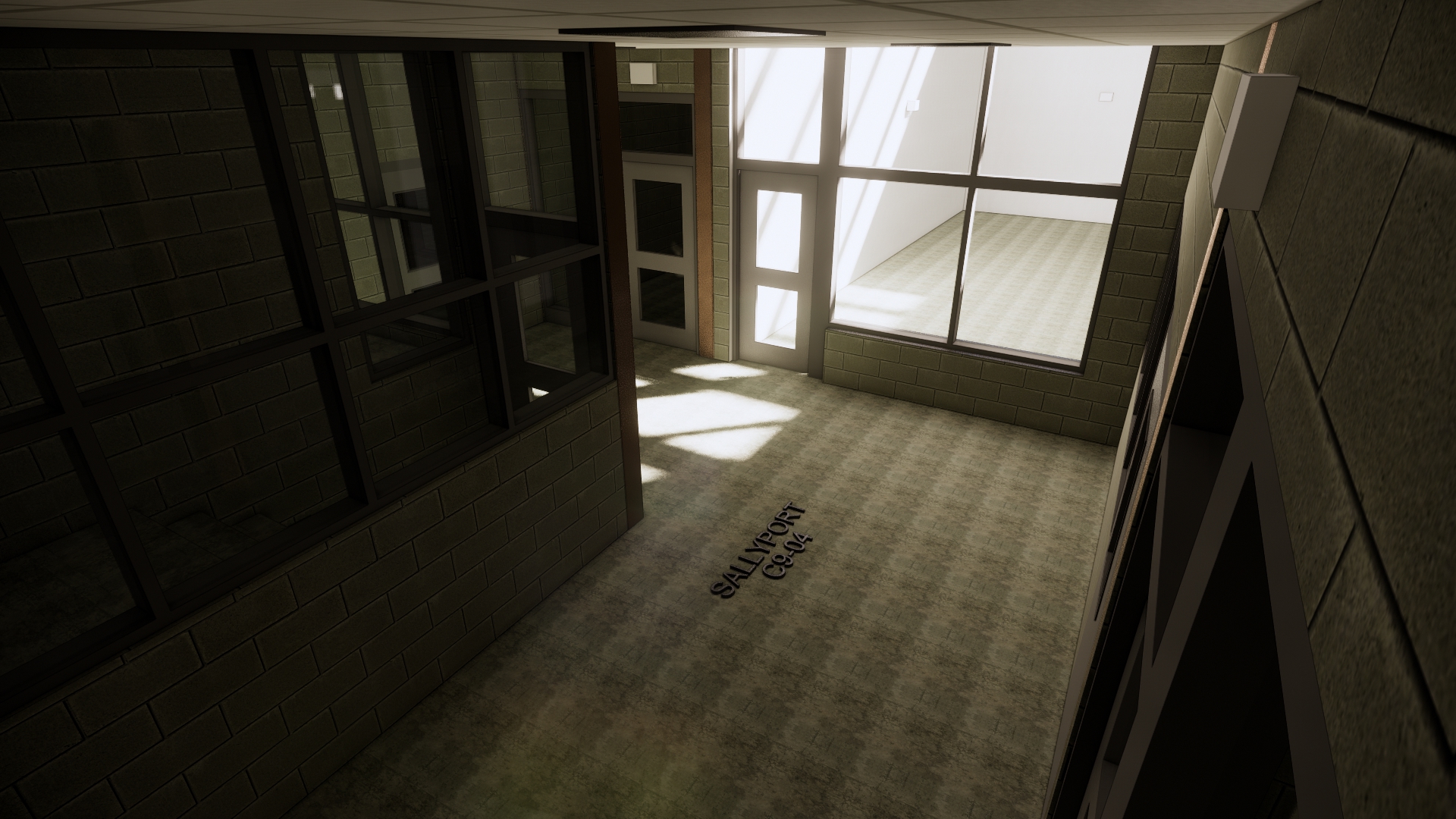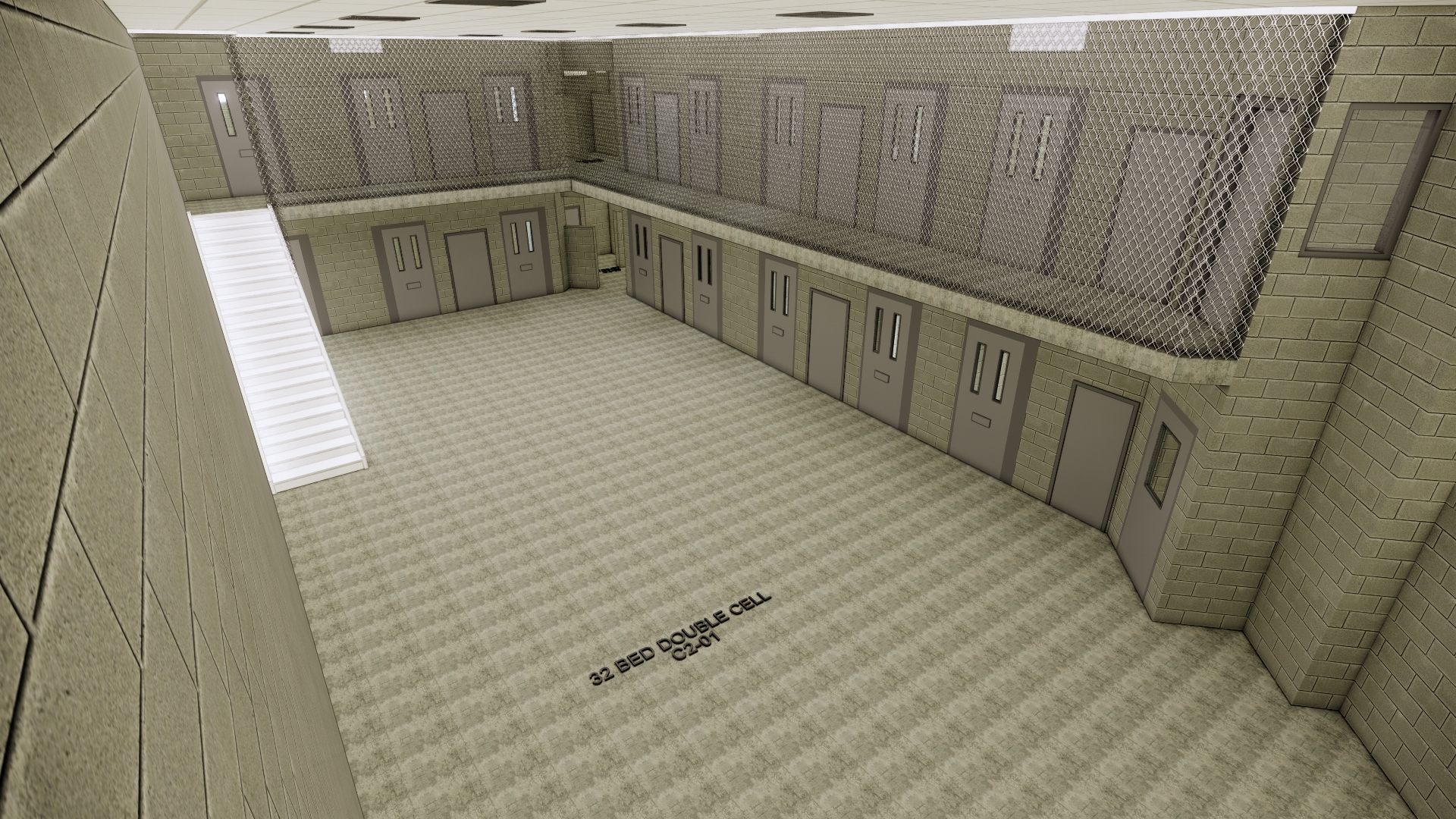Granger Construction’s investment in Virtual Design Technology enabled the Warren County Jail project team to use 3D camera modeling to improve the customer experience while enhancing security and attaining over $55,000 in savings.
UNDERSTANDING THE VALUE
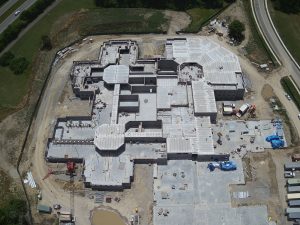
Security cameras are used in a number of facilities, from K-12 schools and university campuses to hospitals, banks and correctional facilities, like Warren County Jail.
“It can be very expensive to move cameras in specialized spaces like jails once they have been installed,” noted Granger Project Engineer Kyle Rosinski. “In offices, lobbies and schools, you have acoustic ceilings with tiles you can usually pop out to access MEP (mechanical, electrical and plumbing), but jails are largely constructed of concrete and steel. You have specific routes for MEP conduit, and once you lock up and enclose those MEPs, moving a camera after installation requires costly rework to gain access. This is why using BIM modeling to review camera placement prior to installation can be so valuable.”
Designs for Warren County’s new jail facility called for over 200 security cameras across both administrative and operational spaces. According to Granger’s Estimating and Virtual Design team, adjusting the location for any one of these cameras after installation could mean between $750 and $1,600 per camera. This is without taking into consideration possible costs and logistics such as relocating occupants or managing downtime if the changes were identified after the Owner took possession of the space. Other cost variables to consider are the distance the cameras need to be moved and whether new cabling and additional raceways are required. Additionally, there is the actual cost of the cameras.
By using BIM modeling to review camera placement prior to installation at Warren County Jail, the team identified 43 cameras that needed to be adjusted prior to installation, saving at least $55,200.
THE PROCESS
Warren County Jail’s 3D modeling and review process was completed during two months of the pre-construction planning period.
“The idea for camera modeling was first introduced to Granger’s project team by our Regional Director and Senior Project Manager, Jason Woehrle,” continued Rosinski. “I ran it by Warren County’s Jail Administrator, Major Brett Richardson, and with buy-in from the Sheriff’s Office, we started our three-part assessment process.”
- Identification: The team began by working with Major Richardson to identify which cameras to model and understand how jail administrators intended to use the cameras in each space. Rosinski then noted elevation and location details for every identified camera and handed this information over to Granger’s BIM Coordinator, Darrah Leach.
- Modeling: Utilizing the project team’s Revit model, Leach set up camera views to simulate the angle and type of camera beings installed in each location. For examples, if a camera had a 30 degree view or could rotate 360 degrees, those were the views Leach would model. She then added more realistic perspective and detail using the rendering engine EnscapeTM.
- Review: After completing the models, Granger’s team met with Major Richardson, Sheriff Larry Sims and partners from Prater Engineering and Accurate Controls to review each model and identify necessary adjustments. The team met three times over the two-month period and ended up altering positioning of 43 cameras.
KEY BENEFITS
“Using 3D camera modeling for projects like Warren County Jail offers many benefits,” noted Granger Director of Virtual Design and Construction Andy Darland.
- Improved Visualization: Some cameras show 360 degrees, while others show 180 degrees. Another type may offer six angles, but maybe we need a certain angle pointed at a specific door or spot in the room. By creating 3D simulations, we bring these numbers to life for the staff who will use this technology once the spaces are complete. 3D models enable Owners and key stakeholders to see what their cameras will see ahead of any installation. This helps them better consider how they will manage the spaces with these cameras and provides a better picture of the project overall.
- Obstructions, Omissions and Redundancies: 3D models are also excellent tools for identifying any view obstructions. For example, in jail areas there can be significant architectural or steel obstructions. Models help the project team identify and address these issues prior to installation and show areas where the Owner may want to add or reduce cameras to cover all necessary square footage.
- Reduced Change Orders and Costs: Confirming camera placement and positioning early in a project is relatively easy and enables the project team to do things right the first time without needing to make costly adjustments after installation.
When asked for his opinion on the value of completing the 3D camera modeling and review, Major Richardson noted, “It definitely made me feel more comfortable with the camera placements after being able to see their field of view.”
Sheriff Sims added, “We felt it was extremely valuable and allowed us to suggest adjustments or additions as necessary.”
“3D modeling is an easy, fast and effective method for increasing quality and security while reducing project costs,” added Darland. “This is a Lean process we can use to add value across markets and facility types and I look forward to identifying new ways for our teams to utilize and advance this technology.”




